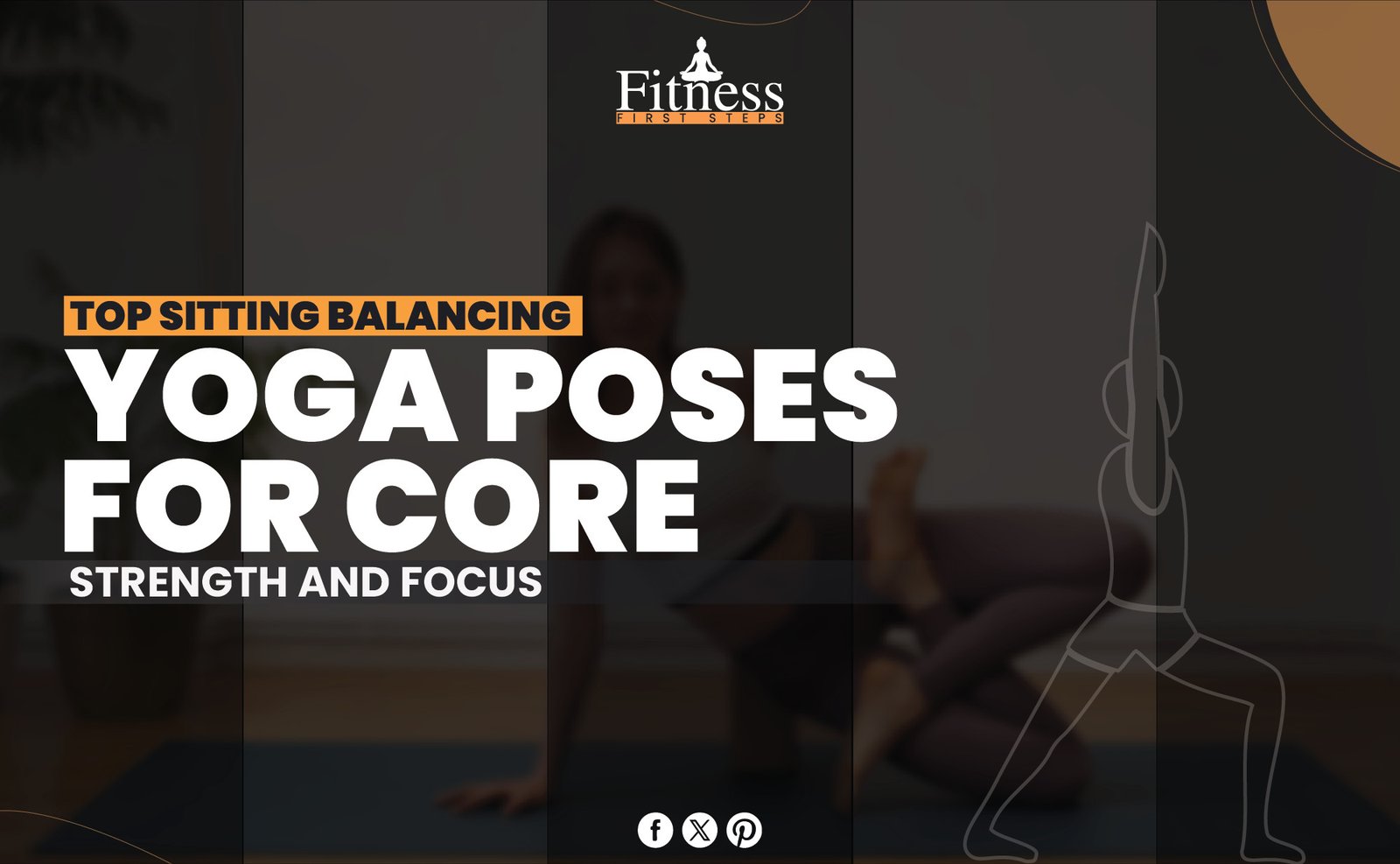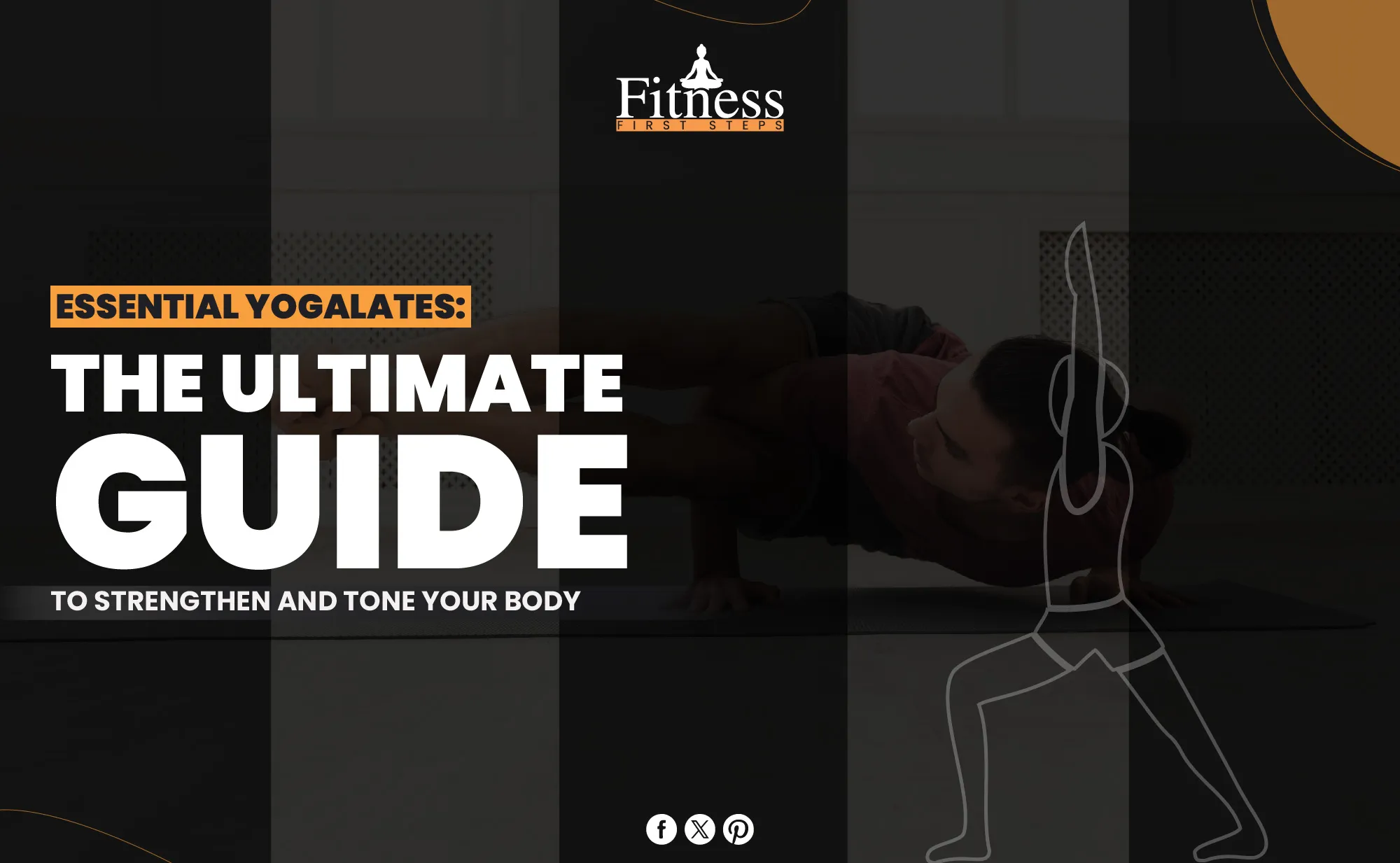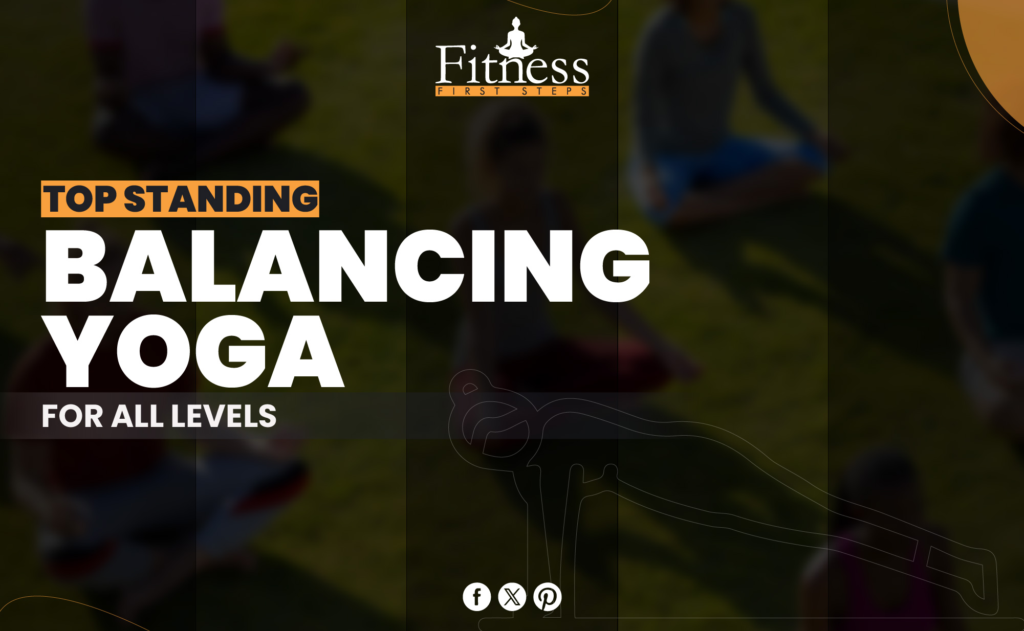Introduction
Prenatal yoga is one of the most accessible and supportive practices for pregnant mothers. Prenatal yoga combines mild physical activities, breathing, and meditation for pregnant women. This practice relieves pregnancy symptoms and prepares the body and mind for childbirth.
Our next parts will discuss prenatal yoga’s many advantages across all three trimesters. Prenatal yoga promotes physical strength, flexibility, emotional resilience, and mental clarity for a safe pregnancy and childbirth.
You can read more about A Guide to Prenatal Yoga Practices.
First Trimester: Nurturing Body and Mind
Understanding Early Pregnancy:
The mother and fetus undergo major changes in the first trimester. Significant changes and adjustments are occurring. Important early pregnancy considerations:
- Physical Adjustments: The body undergoes major adjustments to support the embryo. Hormones can cause weariness, nausea, and mood swings. Physical activities, especially pregnant yoga, require focus and kindness.
- Importance of Gentle Exercise: Gentle, low-impact movements like prenatal yoga can help ease some of the discomforts of the first few months of pregnancy. It’s also good for your general health, helps blood flow, and makes you feel better emotionally.
- Mental and Emotional Well-being: During the first three months of pregnancy, you might feel excited, worried, or happy simultaneously. Adding mindfulness and meditation to pregnancy yoga can help control your emotions and relieve stress.
- Connecting with Your Baby: Early pregnancy is a great time to get to know your growing child. Focused breathing and gentle yoga poses can help improve this connection, making you feel at peace and connected.
- Safety Considerations: If pregnant, you should always talk to your doctor before starting a new workout plan. Pay attention to your body and avoid poses or activities that make you feel bad.
These early days of pregnancy set the tone for the entire prenatal journey. Prenatal yoga, which emphasizes connection, gentle movement, and breath practice, helps you navigate this stage gracefully.
Gentle Beginnings:
- Choosing the Right Practice: Choose prenatal yoga classes or videos taught by experts who understand pregnant women’s requirements. Choose soft, restorative positions over vigorous stretches or resting flat on your back.
- Focus on Breathing: Doing deep breathing techniques can help you deal with stress and anxiety. Some methods, like Ujjayi (Victorious Breath), can be especially helpful because they allow you to relax and feel very calm.
- Establishing a Routine: Even if it’s only for a few minutes, try to do pregnant yoga daily. Being consistent can help you stay flexible, relieve aches and pains, and boost your happiness and energy.
- Listening to Your Body: During each yoga class, pay close attention to how your body feels. Stop right away if something hurts or makes you feel bad. Changes and adaptations can be made to ensure safety and comfort.
- Stay Hydrated: Keep water close by and drink plenty before, during, and after your yoga practice. Staying hydrated is important for your health and energy during pregnancy.
- Community and Support: Taking a prenatal yoga class lets you meet other pregnant women and feel like you’re part of a group. Sharing your stories and advice can be very helpful during this change.
Mindfulness Practices:
- Cultivating Presence: Be conscious throughout yoga to stay present and connected with your body and baby. Guided meditation and focused breathing can improve awareness and calmness.
- Daily Gratitude: Every day, think about the good things about your pregnancy to practice thanks. This can help you change your attention from pain and worry to happiness and appreciation.
- Body Scanning Meditation: Relax your entire body with a body-scanning meditation. From the toes up, notice any tension and relax it. Stress reduction and sleep improvement can result from this exercise.
- Visualization Techniques: Use visualization to imagine an easy pregnancy and happy deliveries. Visualization improves mental and emotional health, strengthening your bond with your baby.
- Setting Intentions: Each prenatal yoga session should start with an aim. Your desires for your pregnancy and baby may be “peace,” “strength,” or “connection.” This helps your practice reflect your values and aims.
Second Trimester: Blossoming Into Strength
Embracing the Changes:
- Increased Energy Levels: The second trimester boosts energy, making it a good time to practice prenatal yoga. Gain strength to prepare for your baby’s weight and labor.
- Strengthen Core and Pelvic Muscles: Practice exercises that strengthen your core and pelvic floor muscles. Additionally, these areas are very important for supporting the growing uterus weight and can help with healing after giving birth.
- Balance and Stability: Balance is harder when the center of gravity moves. Use stability and proprioception exercises like tree pose or modified warrior poses to prevent falls.
- Moderate Exercise: Elevated energy levels are good, but doing what is necessary is important. Keep your balance by doing moderate workouts and listening to your body.
- Connecting with Other Expectant Mothers: Prenatal yoga class relationships might strengthen in the second trimester. As your body changes, sharing experiences and thoughts can encourage you.
Building Strength and Flexibility:
- Gentle Strengthening Exercises: Start doing light strengthening exercises. Squats and pelvic tilts prepare the body for childbirth. Avoid strain by performing these exercises properly.
- Flexibility through Stretching: Stretching exercises can help you stay flexible and even make you more flexible. Focus on stretches for your lower back and hips to ease stress and make room for your growing baby.
- Use Props for Support: As your pregnancy continues, change your poses using yoga blocks, bolsters, and bands as props. These can add extra support to poses, making them safer and more comfortable.
- Monitor Heart Rate: While you work out, watch your heart rate to ensure it stays in a safe range for pregnancy. Keep working hard, and take stops when you need to.
- Mindful Movement: Be aware of each movement and consider how your body and baby are connected. This practice helps you become more aware of and grateful for what your body can do while pregnant.
- Regular Check-ins with Healthcare Providers: Talk to your doctor about your pregnant yoga practice often, especially as you get into the second trimester. Changes may need to be made based on your health and the pregnancy.
Partner Engagement:
- Participate in Partner Yoga: Get your partner to prenatal yoga classes. Doing yoga with a partner can help you connect better, making some poses easier and more fun.
- Educational Sessions Together: Take birthing and parenting classes together. These can give both couples insight and prepare you for the adjustments.
- Communication and Support: Share your pregnancy needs, worries, and experiences with your spouse. Open discussion strengthens your partnership and keeps you involved and encouraged during this journey.
- Practice Relaxation Techniques: Work together on guided meditations and breathing exercises. The skills you learn during pregnancy can help you through childbirth and beyond.
Third Trimester: Preparation and Connection
Welcoming the Final Stretch:
- Adapting Yoga Practice for Comfort: Adjust your yoga practice to emphasize comfort over challenge as your body and baby grow. Choose seated and supine positions to reduce back and leg pressure.
- Breathing Exercises for Labor: Focus on breathing techniques to help you while giving birth. Ujjayi breath and other techniques can help you calm down and feel less pain, which makes them great for handling contractions.
- Pelvic Floor Preparation: Keep emphasizing pelvic floor movements in your routine. These can help build muscle tone and stamina, which are important for labor and recovery after giving birth.
- Mindfulness and Meditation: Spend more time on meditation and mindfulness techniques. These things can help you calm down and feel ready for birth if you’re worried about it.
- Nesting and Reflection: Nesting and reflection help you psychologically and physically prepare for your baby. Organize the baby’s space and think about your parenting goals.
- Create a Birth Plan: Your healthcare professional can help prepare a labor and delivery birth plan. This plan can include delivery positions, pain management, and attendees.
- Gentle Stretching and Mobility Work: Focus on light stretching and movement exercises to keep your circulation and flexibility up. This can help during the last few weeks of pregnancy and labor.
- Strengthen Emotional Bonds: Spend time with your partner and family before the baby arrives to establish relationships. Discussing aspirations, expectations, and worries can strengthen your support system and make everyone feel involved.
Gentle Movement and Comfort:
- Focus on Relaxation: Relaxation and stress reduction are key in the final weeks before childbirth. Gentle yoga flow, guided visualizations, and breathing techniques can help relax the mind.
- Swimming for Relief: Swimming or water aerobics can provide weightlessness and alleviation from third-trimester weight. Water activities minimize leg and foot swelling and are low-impact.
- Walks for Circulation: Regular walks can improve circulation, digestion, and gestational diabetes risk. Walking is a low-impact way to exercise and connect with nature.
- Prepare for Postpartum: Start researching and planning postpartum recovery. This may include freezing meals, creating a home recovery space, and discussing postpartum care with your partner.
- Connecting with Your Baby: Talk, play relaxing music, and gently touch your baby daily to connect with them. This can help you bond with your baby early on and give them a feeling of security and love.
Bonding Practices:
- Reading to Your Baby: Reading aloud to your infant before birth helps bonding. This exercise soothes you and your infant and introduces your voice, fostering early language development.
- Reflecting on Your Journey: Reflect on your pregnancy journey, noticing physical changes, family progress, and parenting expectations. Journaling these thoughts and feelings might be beneficial.
- Creating a Welcoming Space: Finish your baby’s nursery or sleeping room for serenity and safety. This activity prepares for the baby’s arrival and boosts excitement.
- Participation in Antenatal Classes: If you haven’t already, taking prenatal classes can help you learn about giving birth, caring for babies, and nursing. They can also help you meet other people who are expecting.
Benefits of Prenatal Yoga Throughout Pregnancy
Physical Well-being:
- Increased Flexibility: Prenatal yoga slowly stretches and tones muscles, making them more flexible, which helps with the physical demands of pregnancy and giving birth.
- Enhanced Strength: Regular practice strengthens the muscles used during labor, especially those in the hips, back, shoulders, and pelvic floor. This makes labor and healing go more smoothly.
- Improved Circulation: Doing yoga improves blood flow, which keeps pregnancy-related problems like swelling and varicose veins at bay.
- Reduced Back Pain: Prenatal yoga can help lower back pain as the belly grows by strengthening and relaxing the spine and hips.
- Better Sleep: Yoga can help you relax and relieve stress, which can help you sleep better, which is very important for pregnant women.
- Optimal Baby Positioning: Some poses and workouts can help the baby get into the best position for birth, which could make the delivery go more smoothly.
Emotional Support:
- Stress Reduction: Prenatal yoga is a relaxing way to escape the stresses of everyday life and fears about pregnancy, labor, and becoming a mom. It can also help lower cortisol levels and improve mood.
- Increased Confidence: Yoga can help pregnant women feel more confident in their body’s abilities to give birth and care for their children, giving them a feeling of power.
- Community and Support: Prenatal yoga classes help pregnant women feel like they are part of a group by giving them a place to share their experiences, worries, and tips, which makes them feel less alone.
- Mind-Body Connection: Yoga creates a strong link between the mind and the body. This helps pregnant women become more aware of their bodies’ needs and changes, which leads to a more natural approach to pregnancy and giving birth.
- Enhanced Emotional Resilience: Regular yoga practice helps you learn how to deal with pain and stress, important skills during labor and after giving birth.
Spiritual Connection:
- Heightened Awareness: Prenatal yoga raises awareness of pregnant mothers’ spiritual selves and the life growing inside them. This awareness creates a spiritual connection with the baby, making the pregnancy sacred and amazing.
- Preparation for Motherhood: Meditation and mindfulness in prenatal yoga prepare women spiritually and physically for motherhood. They teach patience, compassion, and nurturing—essential parenting traits.
- Strengthening Intuition: Yoga helps the inner voice and intuition grow, giving pregnant women the confidence to trust their knowledge and gut feelings when choosing their pregnancy, birth plan, and parenting style.
- Fostering a Sense of Belonging: Prenatal yoga’s spirituality fosters a sense of solidarity among mothers and caregivers past, present, and future. This knowledge may comfort, strengthen, and unite women during their unique and personal pregnancy and delivery journey.
Tips for Practicing Prenatal Yoga Safely
Listen to Your Body: Listening to and acknowledging your body’s requirements and limitations is essential to safe prenatal yoga. What’s comfy one day may not be the next throughout pregnancy. Avoid uncomfortable or painful positions and motions by adjusting your practice.
Seek Professional Guidance: A certified pregnant yoga instructor is vital for safety and effectiveness. These professionals coach pregnant moms through safe sequences and make pregnancy-specific adjustments. Prenatal yoga can be improved by choosing a safe, personalized class.
Stay Hydrated and Rested: Hydration and rest are essential for healthy prenatal yoga. Drinking enough water before, during, and after yoga can prevent dehydration during pregnancy. Rest during yoga improves the mother and baby’s well-being.
Avoid Certain Poses: During pregnancy, avoid yoga positions that push on the abdomen or lie flat on the back after the first trimester. Also, avoid inversions and steep twists. Adjusting or avoiding poses that could hurt the mother or infant requires a trained instructor.
Conclusion
The transforming influence of prenatal yoga for pregnant women shows that it’s more than exercise. A holistic approach that nurtures the body relaxes the mind, and links the spirit to the miracle of birth. Prenatal yoga celebrates a woman’s body’s remarkable transformations and helps her navigate this difficult but beautiful journey with strength and grace.
For a fulfilling pregnancy, we recommend yoga. Prenatal yoga provides tranquility, empowerment, and a deep connection with your unborn child beyond physical alleviation. Pregnancy is a particular moment to enjoy intimacy and form a lifelong commitment.
Readers are invited to try pregnant yoga and holistic wellness. Prenatal yoga is a gentle yet powerful tool for physical comfort, emotional balance, and spiritual connection with your baby. Join a class, meet other moms-to-be, and enjoy the full benefits of this ancient practice. Your body, baby, and spirit will appreciate it.




